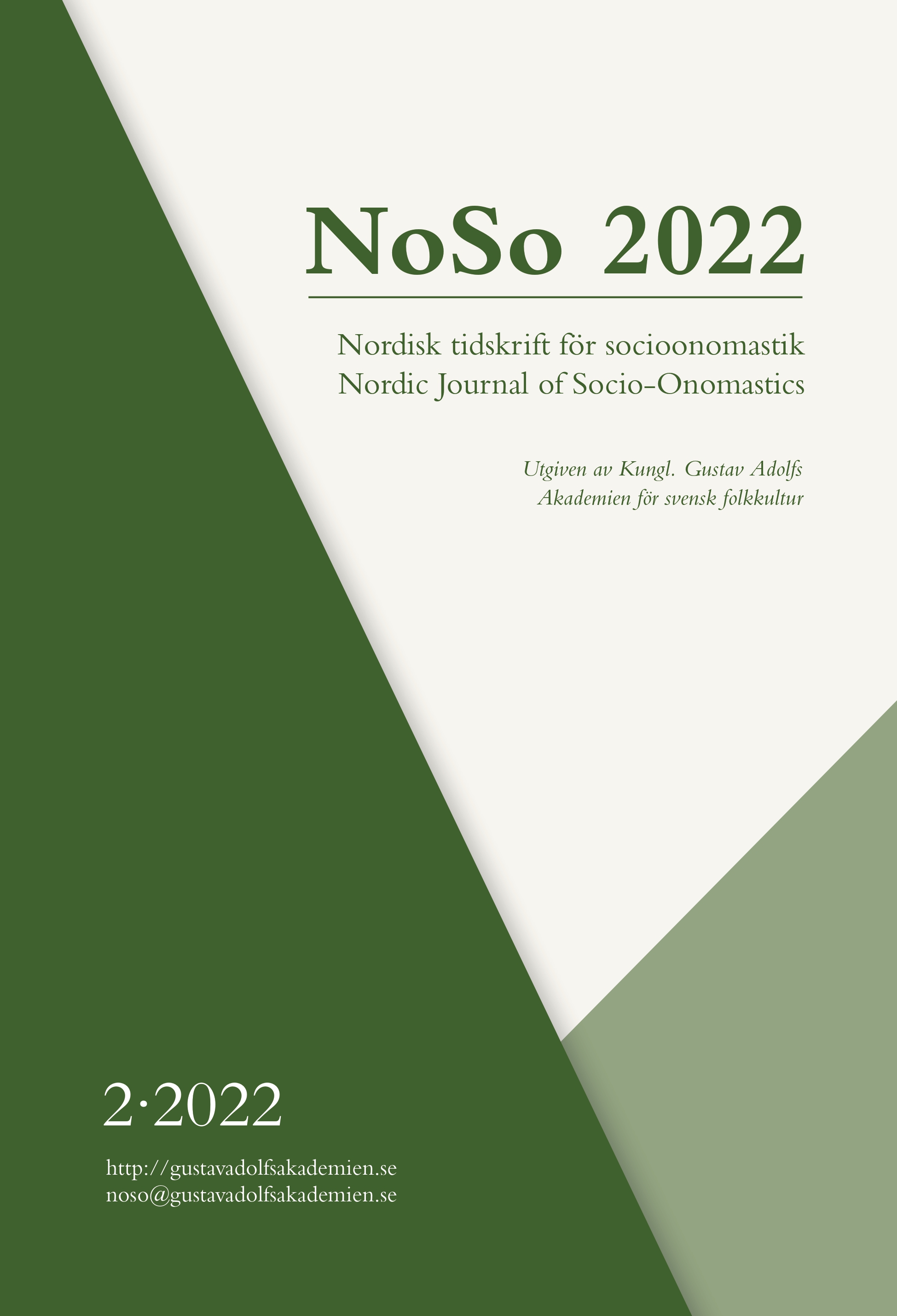Social aspects of introducing the multiple forename system in Skellefteå, Sweden
1720–1890
DOI:
https://doi.org/10.59589/noso.22022.14674Keywords:
multiple forename system, propertied/unpropertied farmers, social groups;, skilled/unskilled workers, unmarried mothers, 1720-1790, 1791–1890, upper/lower middle class, ‘us’ and ‘them’Abstract
With a particular focus on differences within social groups, this article describes the multiple forename system as it emerged between 1720 and 1890 in the area of Skellefteå in the north-east of Sweden. Female and male forenames are compared, as is the introduction of the multiple forename system in different social groups in the study data. Theoretical starting points are taken from the discipline of cultural sociology, especially the work of Simmel (1957) and Bourdieu (1984; 1989; 1997). The results indicate that this naming pattern was introduced in the naming of girls prior to the naming of boys. Analysis of the social aspects of the process takes its starting point in fields like ‘names and social identity’, ‘status and (group) solidarity’, and ‘the importance of taste’. The data studied are divided into six social groups based on the father’s social rank at the time of the child’s birth, one group comprising unmarried mothers and one ‘miscellaneous’ group. The results illustrate that the practice of giving children at least two forenames was introduced by the upper middle class (upper bourgeoisie), who then either returned to giving one forename or increased the number of forenames to three for each child. (...)
Published
How to Cite
Issue
Section
License
Copyright (c) 2022 författaren/författarna

This work is licensed under a Creative Commons Attribution 4.0 International License.






